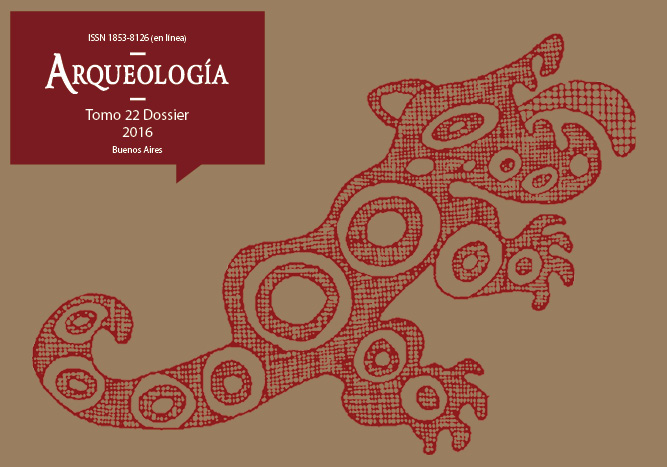Age and death seasonality determination of <i>Otaria flavescens</i> and <i>Arctocephalus australis</i> canine teeth from Punta Entrada (Santa Cruz river mouth, Argentina)
Keywords:
Pinnipeds, Seasonality, Canines, Patagonia, Hunter-gatherers
Abstract
This paper explores the seasonality results obtained from seven pinniped canines. These are used to determine possible patterns of human exploitation of these animals by the populations that inhabited the Southern Patagonian coast during the Late Holocene. Due to their durability, teeth are very common within archaeological contexts affected by erosional processes. Canines, in particular, provide uniquely valuable data useful for determining the season in which the animal’s death occurred. Pinnipeds have a known growth rate, that is regulated by various factors such as age, reproduction, temperature, and salinity, among others. Variations in these factors are reflected in the dentin and cementum. Thus, the growth lines preserve in their formation sequence a pattern which yields data concerning the environmental characteristics, periodicity of growth, season of death, etc. This information is useful in discussions pertaining to human use of space, subsistence strategies and site formation processes, among others. The analysis of the archaeological teeth recovered from Punta Entrada (Santa Cruz River-mouth) demonstrate that human occupation took place throughout the whole year.Downloads
Download data is not yet available.
How to Cite
Pretto, A. L. (1). Age and death seasonality determination of <i>Otaria flavescens</i> and <i>Arctocephalus australis</i> canine teeth from Punta Entrada (Santa Cruz river mouth, Argentina). Arqueología, 22(3), 231-241. https://doi.org/10.34096/arqueologia.t22.n0.3285
Section
Reports
Authors who publish in this journal agree to the following conditions:
- Authors retain copyright and yield to the journal right of first publication with the work registered with attribution license Creative Commons, which allows third parties to use the published always mentioning the authorship of the work and first publication in this magazine.
- Authors can make other independent and additional contractual arrangements for the non-exclusive distribution of the version of the article published in this issue (p. Eg., Inclusion in an institutional repository or publish it in a book), provided that clearly indicate that the work was published for the first time in this magazine.
- It allows and encourages the author / s to publish their work online (eg institutional or personal pages) before and during the process of revision and publication, as it can lead to productive exchanges and greater and more rapid dissemination of work published (See The Effect of Open Access).





(1)13.png)






1.jpg)
1.jpg)


13.png)
1.png)


(1)1.png)









